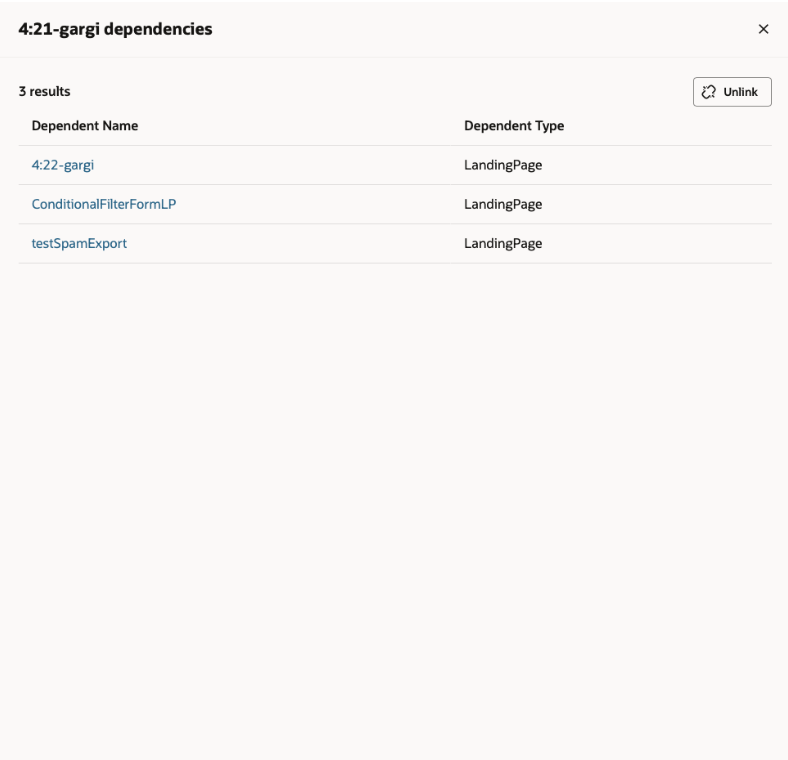Microsites
Warning: As part of best practices, Oracle Eloqua recommends that you always use either secure or authenticated microsites (both authenticated microsites and Authenticated Portals must have secure microsites) to encrypt data that is passed between a visitor’s browser and the web server. Basic microsites are not recommended and if actively being used should be considered for change to a secure microsite.
A microsite is a miniature website, often dedicated to a specific campaign, product, or keyword. The purpose is to give a visitor (whether channeled through your website, social media assets, emails, SMS, or other channels) precise information that they can use to better understand your products and services or to make a buying decision. Each landing page that you create in Oracle Eloqua must have an associated microsite.
A microsite can have any number of web pages. Each page could also contain personalization so that details specific to the viewer (such as the First Name) are reflected on the page using field merges.
In this topic, you'll learn about:
Example: A company, Blue Semiconductor, uses https://events.example.com/example as a secure microsite: it is separate from the company's corporate website, but is consistently branded. This microsite enables Blue Semiconductor to group content specifically related to its events into one area, making it easier to track visitors that are interested in their Example event, track conversions, and so on.
Types of recommended microsites
-
A secure microsite uses SSL (Secure Sockets Layer) to encrypt the data that is passed between a visitor's browser and the web server. This type of microsite is the preferred type over basic microsites. Normally, data sent between the browser and the webserver is transmitted in plain text. SSL encrypts the data so it cannot be intercepted by a third party, making it ideal for microsites that will involve the exchange of sensitive information, like passwords.
Learn more about secure microsites.
-
An authenticated microsite is a secure microsite that requires visitors to log in before they can view the site's content. Authenticated microsites use SSL protocol to encrypt the connection between the browser and the web server, and user credentials to restrict access. These security features allow you to create microsites that include sensitive information, or simply information that you want to restrict to a specific audience.
Learn more about authenticated microsites.
Basic microsites
-
A basic microsite, although the most straightforward type of microsite (a simple http:// domain), is not recommended. You can register your own domain or use an existing domain using Eloqua's built-in domain registration tool. We do not recommend using a basic microsite especially if you have publicly facing information and are collecting data.
Note: It is easier to delete microsites with many dependencies due to the added ability to unlink landing pages from microsites. Please see our section below for more details.
Unlinking landing pages to delete microsites
Unlink landing pages from microsites so that you can easily clean up and delete microsites with many dependencies. You must have the Unlink Microsite Landing Page Dependencies action permission can be added to any security group to allow users of that group to perform this action.
Note: Using this feature will only unlink landing page dependencies. If there are other dependencies, you will have to remove them manually.
To unlink landing pages from a microsite
- Turn on the Redwood Experience by clicking the Oracle Eloqua menu and then click Use Redwood Experience.
- Navigate to Assets
 > Website Setup, then click Microsites to view the Microsite Setup page.
> Website Setup, then click Microsites to view the Microsite Setup page. - In the right pane, click
 and then click View Dependencies. You can now see if there are any dependencies associated with the microsite you are viewing.
and then click View Dependencies. You can now see if there are any dependencies associated with the microsite you are viewing. - To unlink the landing pages, click Unlink in the top right corner. A warning message appears. If you proceed, this will unlink all associated landing page dependencies at the same time. To proceed, click Unlink. After you have unlinked, you can now delete the microsite without any dependencies.
Next steps
Knowledge Base Troubleshooting Assistant: Landing Pages & Microsites
Knowledge Base Best Practice: DNS Configurations for Subdomains and Host Names


